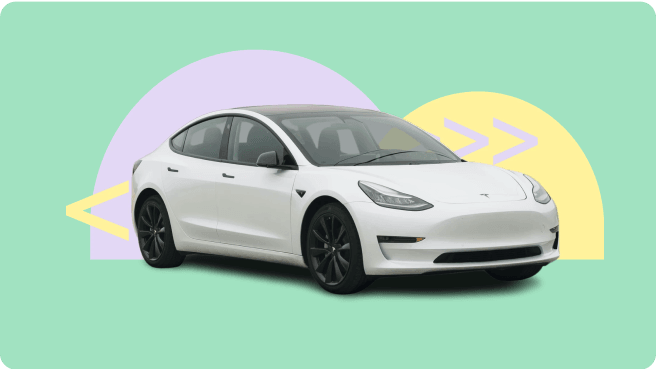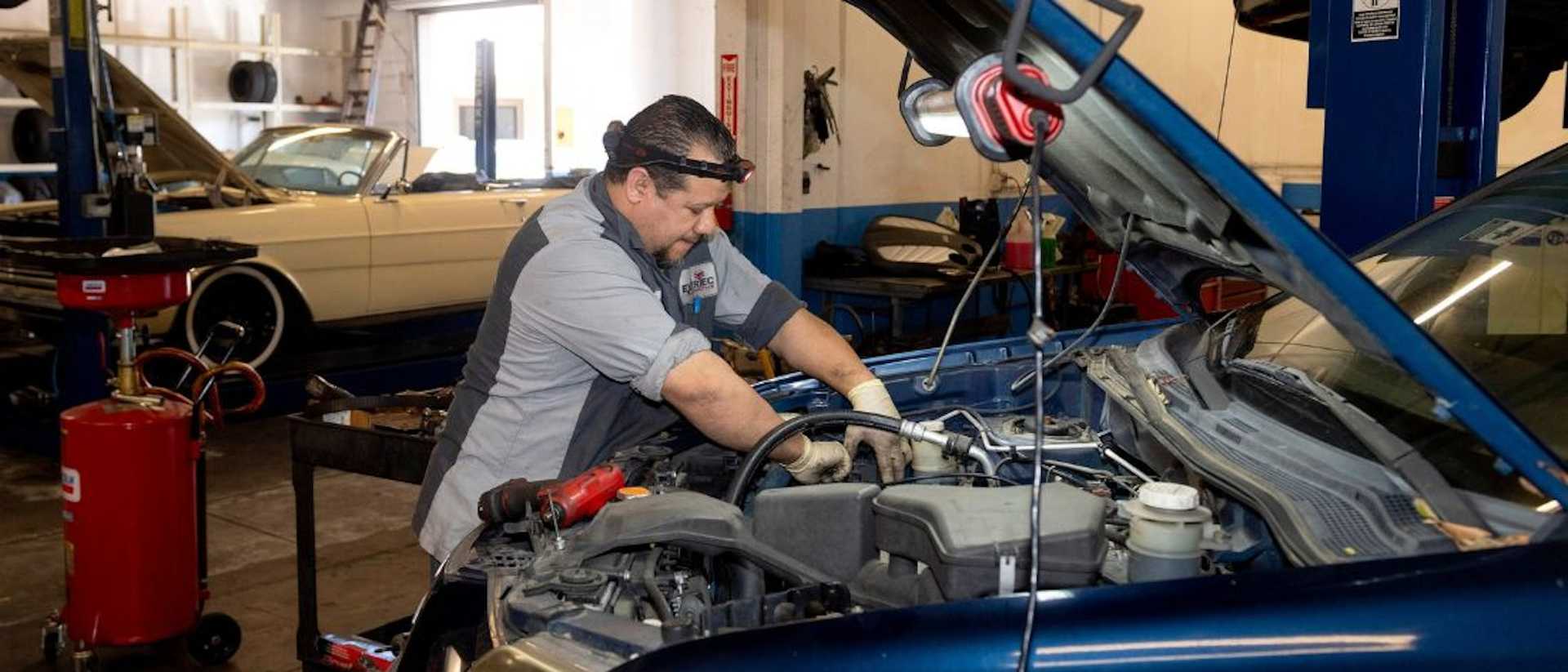How Much Can Green Cars Really Save You? Exploring the Financial Benefits of Eco-Friendly Vehicles
.png)
As concerns about climate change and environmental sustainability continue to grow, many individuals are looking for ways to reduce their carbon footprint and live a more eco-friendly lifestyle. One way to do this is by driving an eco-friendly vehicle, which can significantly reduce greenhouse gas emissions and positively impact the environment. In addition to the environmental benefits, eco-friendly cars also offer several financial benefits that can make them a wise investment for many individuals.
Eco-friendly vehicles, also known as green or electric vehicles, are designed to have a lower environmental impact than traditional gas-powered vehicles. These vehicles can be powered by electricity, hydrogen fuel cells, or a combination of both and often have higher fuel efficiency and lower emissions than their gas-powered counterparts.
Fuel efficiency
One of the key advantages of EVs is their excellent fuel efficiency. Because they run entirely on electricity, they can achieve much higher fuel efficiency ratings than traditional gasoline-powered cars. Many EVs can achieve the equivalent of over 2 liters per 100 kilometers (L/100km) in fuel efficiency, making them one of the most efficient vehicle options on the market.
Some of the most popular EVs in Australia include the Tesla Model S, the Nissan Leaf, and the BMW i3. The Tesla Model S, for example, has a range of up to 610 kilometers on a single charge and can achieve a fuel efficiency rating of just 2.1 L/100km. The Nissan Leaf has a range of up to 385 kilometers and a fuel efficiency rating of just 1.7 L/100km, making it one of the most efficient vehicles on the market.
In addition to their impressive fuel efficiency, EVs offer several other benefits. They produce zero emissions, which helps to reduce their environmental impact, and they are generally quieter and require less maintenance than their gasoline-powered counterparts. They are also becoming more affordable, with several government incentives encouraging EV purchases.
However, one potential drawback of EVs is the need to recharge their batteries. While this can be done at home using a standard power outlet or specialized charging station, it can take several hours to recharge an EV's battery fully. However, as more charging stations are built across the country, and battery technology continues to improve, this is becoming less of a concern for many drivers.
Tax Incentives
.png)
In addition to fuel savings, eco-friendly vehicles can also provide tax savings. These incentives are designed to make it more affordable for individuals and businesses to switch to cars that produce fewer emissions and have a lower environmental impact.
Overview of Available Tax Incentives for Purchasing Eco-Friendly Vehicles
There are currently several tax incentives available in Australia for purchasing eco-friendly vehicles:
- Luxury Car Tax (LCT) Exemption: Electric vehicles (EVs) and hydrogen fuel cell vehicles (FCEVs) that meet certain emissions criteria are exempt from LCT, which is a tax on luxury cars priced above a certain threshold.
- Fuel Tax Credits: Businesses that use eligible alternative fuels in their vehicles, such as compressed natural gas (CNG), liquefied natural gas (LNG), and liquefied petroleum gas (LPG), can claim fuel tax credits for the fuel used in those vehicles.
- Instant Asset Write-Off: Businesses that purchase eligible assets, including eco-friendly vehicles, may be able to claim an immediate deduction for the cost of the asset under the instant asset write-off scheme.
- Australian Capital Territory (ACT) Electric Vehicle Transition Package: The ACT government offers a package of incentives, including stamp duty exemptions and registration fee waivers, for EV purchases.
- Victoria's Zero Emissions Vehicle Subsidy: The Victorian government offers up to $3,000 for new EV purchases.
It is important to note that eligibility criteria and availability of these incentives may vary, and it's always advisable to check with relevant authorities before making any purchase decisions.
How Tax Incentives Can Reduce the Upfront Cost of Buying an Eco-Friendly Vehicle
Tax incentives in Australia can significantly reduce the upfront cost of buying an eco-friendly vehicle. These incentives are designed to encourage the adoption of environmentally friendly transportation options, such as electric vehicles and other low-emission vehicles.
One of Australia's most significant tax incentives for eco-friendly vehicles is the Luxury Car Tax (LCT) exemption. Electric and hydrogen fuel cell vehicles that meet certain emissions criteria are exempt from the LCT, a tax on luxury cars priced above a certain threshold. This can save buyers thousands of dollars upfront when purchasing an electric or hydrogen fuel cell vehicle.
Another tax incentive is the fuel tax credit, available to businesses that use eligible alternative fuels in their vehicles, such as compressed natural gas, liquefied natural gas, and liquefied petroleum gas. The credit rate varies depending on the fuel type and is based on the amount of fuel used and the applicable fuel tax credit rate. This incentive can reduce the overall cost of operating eco-friendly vehicles for businesses.
The instant asset write-off scheme may also provide a significant tax benefit for businesses purchasing eligible assets, including eco-friendly vehicles. This can give a significant upfront tax benefit to businesses purchasing eco-friendly vehicles.
Additionally, some state governments in Australia offer specific incentives for eco-friendly vehicles. For example, the ACT government offers a package of incentives, including stamp duty exemptions and registration fee waivers, for electric vehicle purchases. The Victorian government subsidizes up to $3,000 for new electric vehicle purchases.
Calculation of Potential Tax Savings
Calculating potential tax savings for buying an eco-friendly vehicle in Australia depends on several factors, including the type of vehicle, its purchase price, and the specific tax incentives available. Here's an example calculation for an electric vehicle:
Assuming the purchase price of the electric vehicle is $60,000, the Luxury Car Tax (LCT) exemption would apply, as the vehicle meets the emissions criteria. Therefore, the LCT exemption would save the buyer around $7,000 upfront.
The fuel tax credit can be claimed for a business using eligible alternative fuels. Assuming the vehicle consumes 10,000 litres of eligible fuel in a year at a credit rate of $0.50 per litre, the fuel tax credit would provide a tax benefit of $5,000.
Suppose the business purchased the electric vehicle as an asset. In that case, they could also claim an immediate deduction under the instant asset write-off scheme for the entire vehicle cost, up to a threshold of $150,000.
In this scenario, the potential tax savings for buying an electric vehicle would be around $72,000, comprising a $7,000 LCT exemption, a $5,000 fuel tax credit, and an instant asset write-off, depending on when the vehicle was purchased and installed and ready for use.
It's important to note that the exact tax savings will vary depending on the specific circumstances of the buyer and the availability of tax incentives at the time of purchase. It's always advisable to check with relevant authorities to ensure eligibility and accurate calculations before purchasing.
Maintenance Costs
.png)
When considering the purchase of a vehicle, it is important to consider the long-term maintenance costs. Eco-friendly vehicles can have lower maintenance costs than traditional gas-powered vehicles, providing another potential financial benefit for consumers.
In general, eco-friendly vehicles can have lower maintenance costs than traditional gas-powered vehicles. This is because eco-friendly vehicles have fewer moving parts, and the parts that they do have are often less complex and require less maintenance. For example, electric vehicles do not require oil changes, spark plug replacements, or air filter changes.
How Eco-Friendly Vehicles Can Have Lower Maintenance Costs Over Time
Eco-friendly vehicles can have lower maintenance costs over time due to their simpler and more reliable technology. In addition, some eco-friendly vehicles come with more extended warranties than traditional gas-powered vehicles, which can also reduce the cost of maintenance over time. For example, some electric vehicle manufacturers offer battery warranties lasting up to 8 years or 100,000 miles.
Lower maintenance costs can also result from regenerative braking technology found in many eco-friendly vehicles. This technology can help reduce wear and tear on brakes, significantly reducing the need for brake replacements over time.
Potential Savings on Maintenance Costs
Owning an eco-friendly vehicle in Australia can lead to potential savings on maintenance costs over time. Let's examine how eco-friendly vehicles can help you save money on maintenance.
One of the main reasons why eco-friendly vehicles can be cheaper to maintain is that they have fewer moving parts than traditional gasoline-powered vehicles. For example, electric vehicles (EVs) have fewer parts in their powertrain, meaning fewer things can go wrong. This can lead to lower maintenance costs over the lifespan of the vehicle.
Additionally, eco-friendly vehicles tend to require less frequent maintenance. EVs, for example, don't require oil changes, transmission fluid changes, or tune-ups like traditional gasoline-powered cars do. This can save drivers time and money, as they won't need to take their vehicles in for service as often.
Another way that eco-friendly vehicles can save drivers money on maintenance is through their regenerative braking systems. Regenerative braking allows EVs to capture the energy that would otherwise be lost during braking and use it to recharge the vehicle's battery. This means EVs experience less brake wear and tear, which can help reduce maintenance costs over time.
Finally, some eco-friendly vehicles come with extended warranties or maintenance plans. For example, Tesla offers a four-year/80,000-kilometer warranty on its vehicles and a prepaid maintenance plan that covers all scheduled maintenance for up to four years or 80,000 kilometres. These plans help drivers budget for maintenance costs and provide peace of mind knowing that their vehicle is covered in the event of a breakdown or issue.
Resale Value
.png)
Eco-friendly vehicles such as electric and hybrid cars can have a higher resale value than traditional gasoline-powered cars in Australia. This is because they are more desirable to buyers, have lower maintenance costs, and may be eligible for government incentives or rebates. As technology improves, newer models of eco-friendly vehicles may also have better performance and features, which can further increase their resale value.
In addition, some eco-friendly vehicles may be eligible for government incentives or rebates, which can help boost their resale value. For example, in Australia, new electric and hydrogen fuel cell vehicle buyers are currently eligible for a $3,000 rebate. In comparison, those who purchase a new hybrid vehicle can receive a $1,000 rebate. These incentives can make eco-friendly vehicles more affordable for buyers and increase their resale value.
How This Can Lead to Additional Cost Savings Over Time
Higher resale value can lead to additional cost savings for eco-friendly vehicle owners over time. When it comes time to sell the vehicle, owners can recoup more of their initial investment, reducing the overall cost of ownership. This can make eco-friendly vehicles a more attractive option for those who are looking for long-term cost savings.
Potential Additional Savings from Higher Resale Value
First and foremost, a higher resale value means that EV owners can recoup more of their initial investment when they decide to sell their vehicles. This can offset some of the higher upfront costs of EV purchasing, making it a more attractive option for budget-conscious buyers. For example, if you purchase an EV for $40,000 with a higher resale value of $30,000 after a few years, you'll have effectively "spent" $10,000 on owning the vehicle. In contrast, if you purchase a gasoline-powered car for $20,000 that only has a resale value of $10,000 after a few years, you'll have "spent" $10,000 as well.
Another way that a higher resale value can lead to cost savings is through reduced depreciation. Depreciation refers to the decrease in value that a vehicle experiences over time due to wear and tear, age, and market conditions. Because EVs tend to have higher resale values, they may experience less depreciation than traditional cars. This can help owners save money in the long run, as they can recoup more of their initial investment when they eventually sell their vehicle.
Finally, a higher resale value can make it easier for EV owners to upgrade to a newer or better model without spending as much money out of pocket. For example, if you purchase an EV for $40,000 with a higher resale value of $30,000 after a few years, you'll have more equity in the vehicle that can be applied towards a new purchase. This can help reduce the money you need to borrow or pay for a new vehicle upfront.
Total Cost of Ownership
.png)
When considering the financial benefits of eco-friendly vehicles, it's important to look at the total cost of ownership. This includes the upfront cost of purchasing the vehicle, ongoing fuel and maintenance costs, and potential resale value. Considering all of these factors, it's possible to determine whether an eco-friendly vehicle is a cost-effective choice compared to a traditional gas-powered vehicle.
How Considering All of the Above Factors Can Lead to a Lower Total Cost of Ownership for Eco-Friendly Vehicles
Considering all the factors we've discussed, eco-friendly vehicles often have a lower total ownership cost than traditional gas-powered vehicles. While the upfront cost of purchasing an eco-friendly vehicle may be higher, the fuel savings and potential tax incentives can offset this cost over time. In addition, lower maintenance costs and higher resale value can help reduce the overall ownership cost.
The total cost of ownership can vary depending on the specific vehicle and individual circumstances. However, studies have shown that, in many cases, eco-friendly vehicles can have a lower total ownership cost than traditional gas-powered vehicles.
How the Total Cost of Ownership Can Vary Depending on Individual Circumstances
.png)
It's important to note that the total cost of ownership can vary depending on individual circumstances. Factors such as driving habits, fuel prices, and the availability of tax incentives can all affect the total cost of ownership.
For example, if you have a long commute and fuel prices are high, you may experience greater fuel savings with an eco-friendly vehicle compared to someone who drives less frequently or lives in an area with lower fuel prices. Similarly, the availability of tax incentives can vary depending on where you live and the specific vehicle you choose to purchase.
Considering the total cost of ownership is an important factor when deciding between eco-friendly vehicles and traditional gas-powered vehicles. While the upfront cost of purchasing an eco-friendly vehicle may be higher, the potential savings from fuel efficiency, tax incentives, and resale value can make these vehicles cost-effective. By considering individual circumstances and factors, consumers can make an informed decision when choosing between eco-friendly vehicles and traditional gas-powered vehicles.
Conclusion
In conclusion, eco-friendly vehicles offer several financial benefits for consumers. While the upfront cost of purchasing an eco-friendly vehicle may be higher, the long-term savings and overall value make these vehicles a cost-effective choice for many consumers. In addition to the financial benefits, eco-friendly vehicles also offer environmental benefits such as reduced emissions and a lower carbon footprint.
As the demand for eco-friendly vehicles continues to grow, we expect to see even more technological advancements and incentives to make these vehicles more accessible and affordable for consumers. Consumers can positively impact their wallets and the environment by considering the financial benefits and overall value of eco-friendly vehicles.
If you’re looking for financing for your first eco-friendly vehicle, Driva is the way to go. Driva green car loan offers the best rates in just minutes and lets you finish your application online with 100% fee transparency.


.png)







